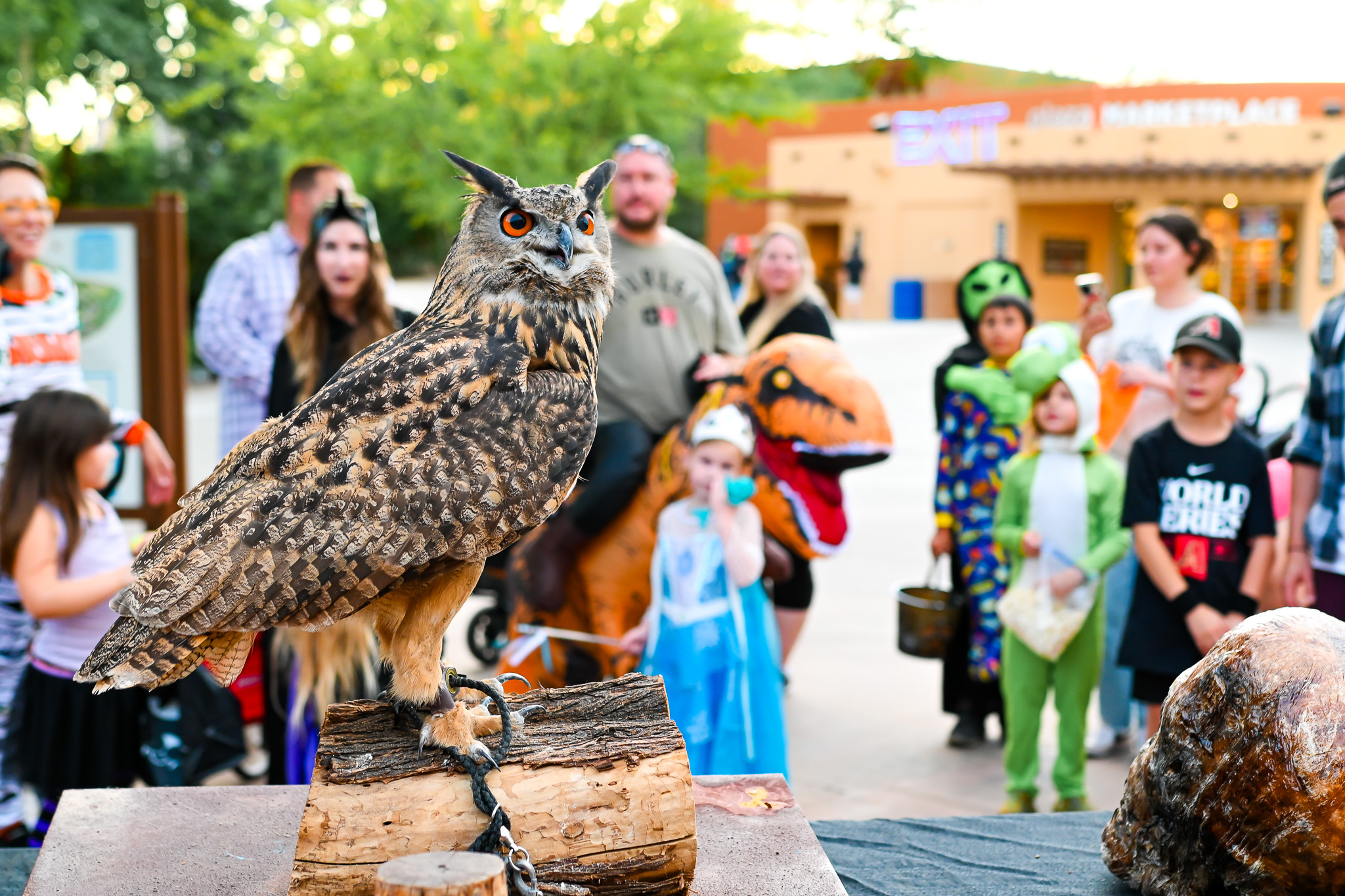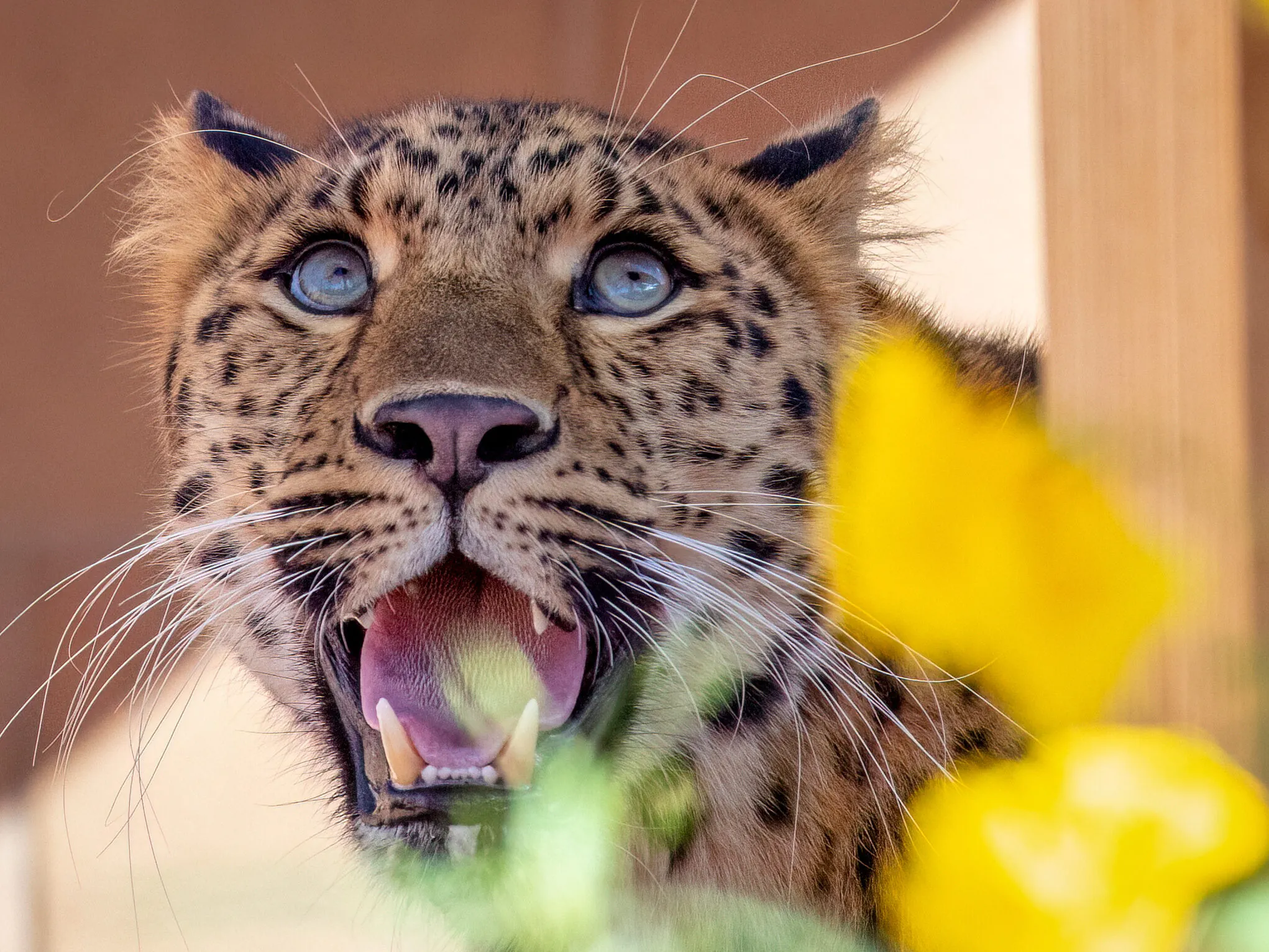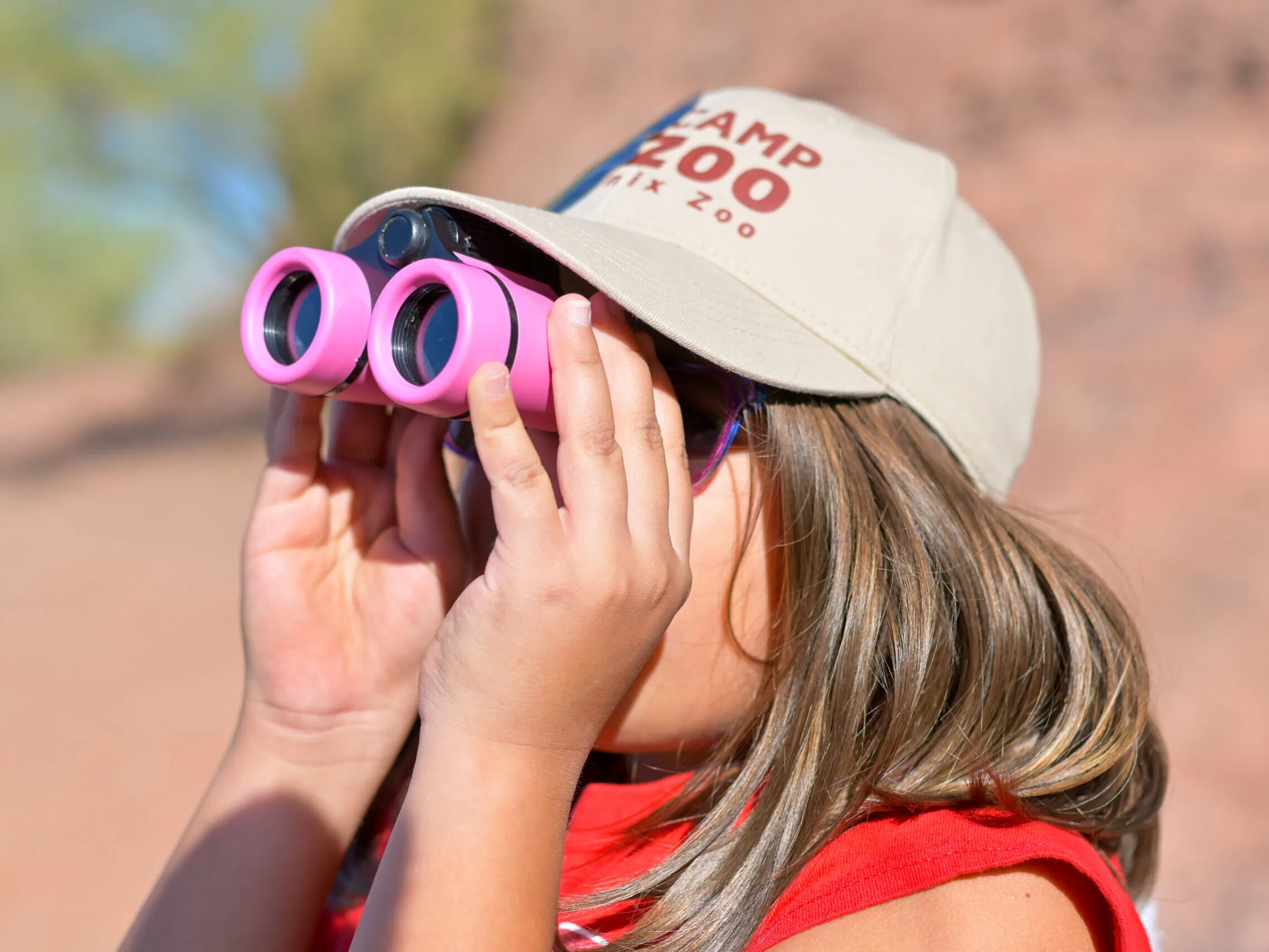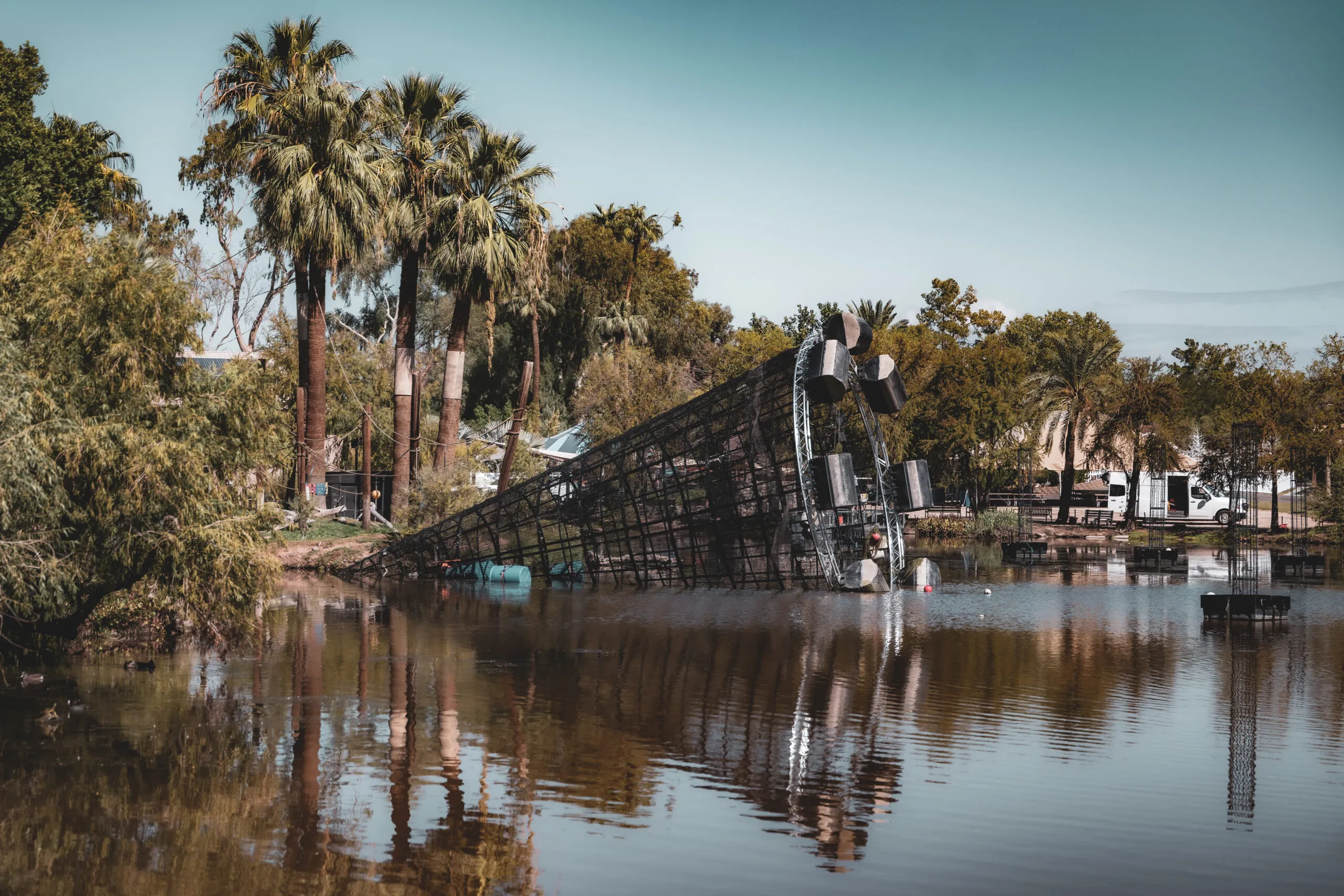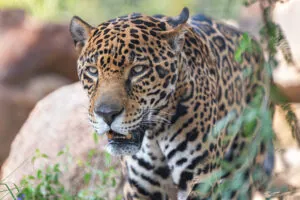Saving Species:
Arabian Oryx
The Resurrection of the Arabian Oryx
For the hundreds of thousands of people who visit the Arizona Center for Nature Conservation/Phoenix Zoo each year, seeing the Arabian oryx is an absolute delight. The Arabian oryx is an almost-pure white antelope christened with a blaze of jet-black across its nose and lower jaw, with black legs that make them look as if they are wearing stockings. The beautifully aligned, long slender horns adorning the head of both male and female Arabian oryx is believed to have given rise to the legend of the unicorn. The Arabian oryx is in many zoos in this country and around the world now, but that wasn’t always the case. In 1960, it was hunted extensively for food and for the presumed magical powers of its horn. In fact, the Arabian oryx went extinct in the wild in 1972.
In 1962, the fledging Phoenix Zoo joined with the Fauna Preservation Society (now named Fauna and Flora International)(FFI) and others to play a significant role in rescuing this magnificent animal from the brink of extinction and, ultimately, reintroducing it back into the wild in Oman.
We will revisit Operation Oryx: a grand expedition to capture what was then believed to be the last few remaining Arabian oryx in the wild and to bring them to Arizona. The Zoo would gladly accept the task of resurrecting the Arabian oryx, thus, becoming the keeper of “World Herd.”


The Birth of “Operation Oryx”
The Arabian oryx used to range throughout the desert regions of the Arabian Peninsula extending to the Syrian Desert. It had been hunted since ancient times, but with the advent of motorized vehicles and high-powered weapons, its numbers drastically declined in the 1940s and 50s.
In his 1960 publication for the Fauna Preservation Society (FFI) “A Look at Threatened Species,” Dr. Lee Talbot, a renowned ecologist, noted that the Arabian oryx appeared to be extinct throughout all of its former range except for the southern region of the Rub-al–Khali desert. Talbot cited concerns about ongoing poaching as the chief reason for developing a propagation program for this species; otherwise, the revered Arabian oryx would go extinct in the wild within just a few years.
The FFI began plans to initiate a mission to Aden in April of 1962. The objectives were to capture as many oryxes as possible, relocate them into a suitable propagation program, and reintroduce offspring back into the wild once numbers were high enough to do so. Operation Oryx was on!
In early April of 1962, a collection party made their way to the starting point in Mukalla, and on April 23, the majority of the party began the overland journey over nearly four hundred miles of desert to their base camp in an area between Sanau and Habarut named Wadi Mitan. Over the course of the next few days, the team managed to capture three wild oryxes: two males and one female.
Forming the World Herd in Phoenix
The three wild oryx began their journey to Phoenix, Arizona, on May 24, 1962. The organizers realized that three oryxes would not be a sufficient number to start a viable propagation program, so the search began immediately to try to locate additional oryxes to include in the program. The London Zoo agreed to supply a young female oryx, King Saud of Saudi Arabia provided two males and two females, and a female was donated from the private collection of H.E. Sheikh Jabir Abdullah al Sabah of Kuwait, culminating in nine oryxes at the Zoo in 1964. This group of nine Arabian oryxes would form the nucleus of the World Herd.


Reintroduction
In 1981, 20 years after the expeditions to retrieve oryx, and 10 years after they had gone extinct in the wild, the last phase of the three-part conservation effort came to fruition. The Arabian oryx was reintroduced once again into the wild. To the people of Oman, the Arabian oryx was a mythical symbol, and though the practice of excessive hunting had led to the extinction of the oryx, they were still revered in the culture and their return to the wild was a significant achievement.
The successful Operation Oryx had involved no less than six world governments, five zoos, many organized societies, conservation organizations and hundreds of dedicated individuals. The whole project established a cooperative approach to animal conservation that became the model for managed care support of animals designed to be released into the wild and demonstrated it is possible for many organizations, governments and people to work collectively and collaboratively toward saving an animal species. In 2011, the Arabian oryx was downlisted from endangered to vulnerable by the International Union for the Conservation of Nature (IUCN). The recovery of Arabian oryx is the first time that a mammal previously extinct in the wild has been recovered to the point where they were delisted – another great testament to the success of Operation Oryx.
The current total population of Arabian oryxes is estimated at approximately 1,000: An estimated 6,000-7,000 animals are held in managed care worldwide, mostly within the region.

